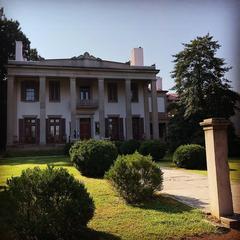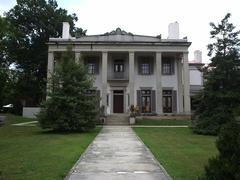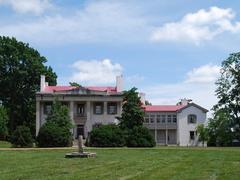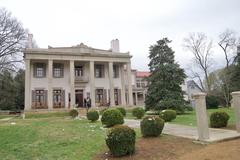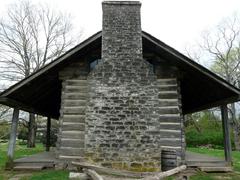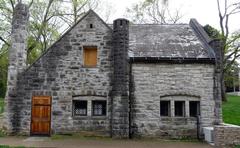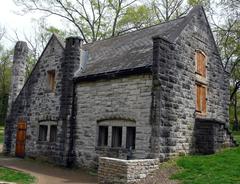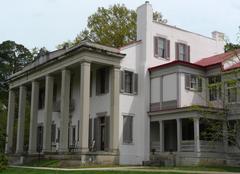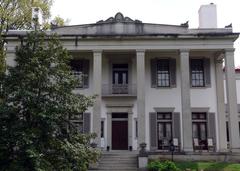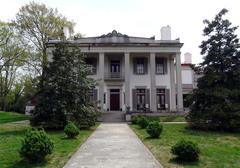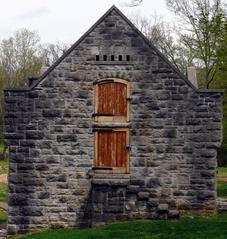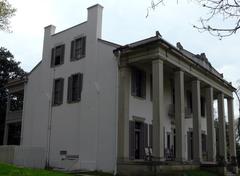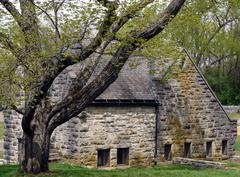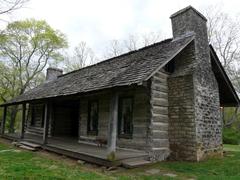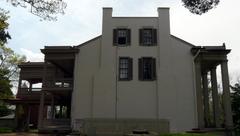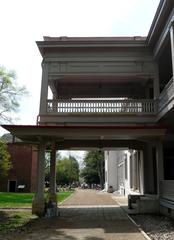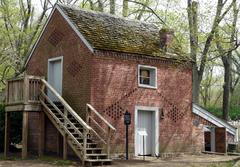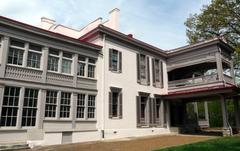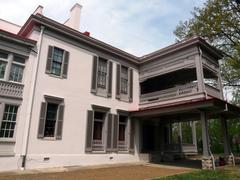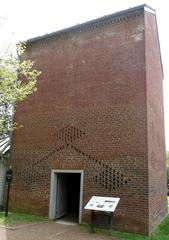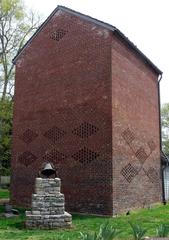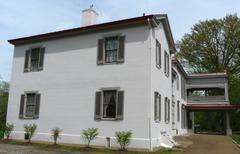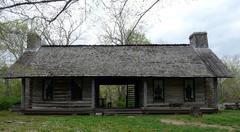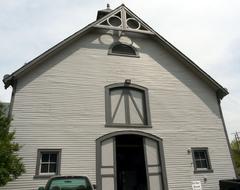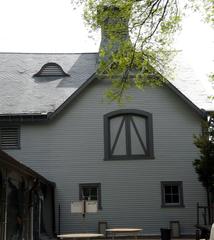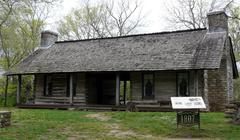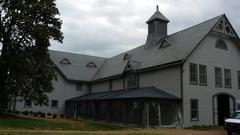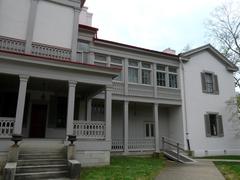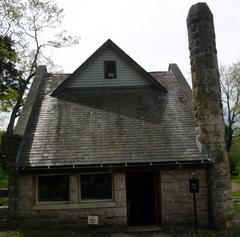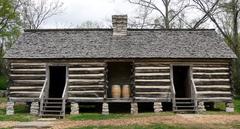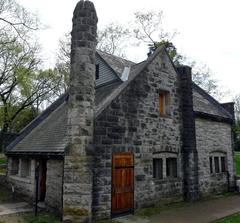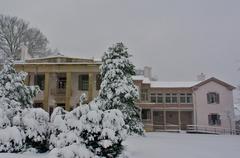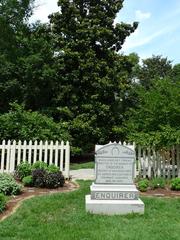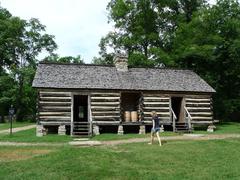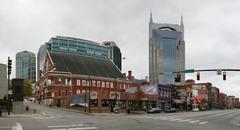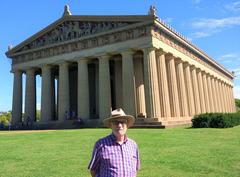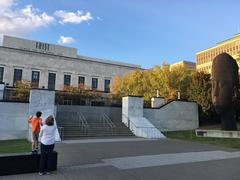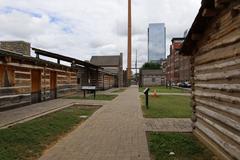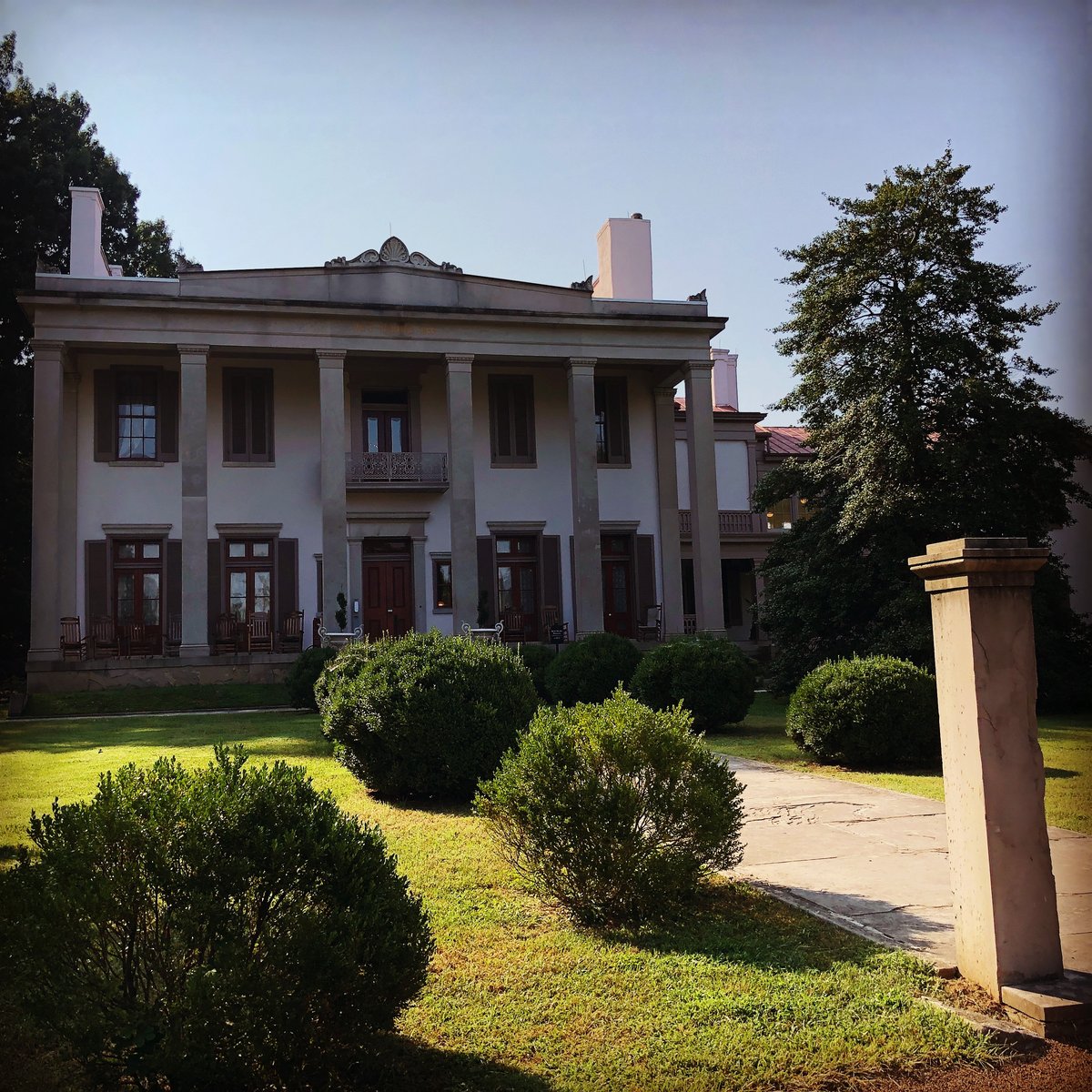
Comprehensive Guide to Visiting Harding House Belle Meade
Date: 18/07/2024
Introduction
Belle Meade Historic Site & Winery, located in Nashville, Tennessee, is an iconic symbol of Southern heritage and history. This historic site offers a unique blend of antebellum architecture, thoroughbred horse racing legacy, and modern-day tourism through its museum and winery. Established in 1807 by John Harding, Belle Meade, meaning ‘beautiful meadow’ in old French, evolved from a 250-acre plantation into a renowned 5,400-acre estate known for its thoroughbred horses and opulent Greek Revival mansion (Belle Meade). Today, visitors can explore the mansion, its well-preserved outbuildings, and picturesque gardens, all while learning about the complex history of the Harding family and the enslaved individuals who lived and worked on the plantation.
The site not only highlights the grandeur of the antebellum South but also provides a comprehensive and inclusive narrative that acknowledges the contributions and experiences of enslaved people. Belle Meade’s commitment to historical preservation and education makes it a must-visit destination for history enthusiasts, horse lovers, and those seeking to understand the multifaceted story of America’s past (Harding House). Whether through guided tours, specialty tours, or self-guided explorations, Belle Meade offers an engaging and thought-provoking experience that connects visitors with a significant chapter of American history.
Table of Contents
- [History and Significance](#history-and-significancehistory-and-significance)
- [A Legacy of Thoroughbreds and Southern History](#a-legacy-of-thoroughbreds-and-southern-historya-legacy-of-thoroughbreds-and-southern-history)
- [The Rise of a Thoroughbred Dynasty](#the-rise-of-a-thoroughbred-dynastythe-rise-of-a-thoroughbred-dynasty)
- [The Mansion - A Symbol of Wealth and Southern Hospitality](#the-mansion---a-symbol-of-wealth-and-southern-hospitalitythe-mansion---a-symbol-of-wealth-and-southern-hospitality)
- [The Civil War and Its Aftermath](#the-civil-war-and-its-aftermaththe-civil-war-and-its-aftermath)
- [Belle Meade in the 20th Century - Preservation and Transition](#belle-meade-in-the-20th-century---preservation-and-transitionbelle-meade-in-the-20th-century---preservation-and-transition)
- [Belle Meade Today - A Window into the Past](#belle-meade-today---a-window-into-the-pastbelle-meade-today---a-window-into-the-past)
- [Acknowledging the Past, Embracing the Future](#acknowledging-the-past-embracing-the-futureacknowledging-the-past-embracing-the-future)
- [Visitor Information](#visitor-informationvisitor-information)
- [Visiting Hours](#visiting-hoursvisiting-hours)
- [Ticket Prices](#ticket-pricesticket-prices)
- [Travel Tips](#travel-tipstravel-tips)
- [Nearby Attractions](#nearby-attractionsnearby-attractions)
- [Accessibility](#accessibilityaccessibility)
- [Visuals and Media](#visuals-and-mediavisuals-and-media)
- [FAQ](#faqfaq)
- [Conclusion](#conclusionconclusion)
History and Significance
A Legacy of Thoroughbreds and Southern History
The story of Belle Meade, meaning “beautiful meadow” in old French, begins long before the grand mansion’s construction. The property’s roots stretch back to 1807 when John Harding purchased 250 acres of land just outside Nashville. This initial purchase marked the beginning of what would become a sprawling 5,400-acre plantation known for its thoroughbred horses and, unfortunately, its reliance on enslaved labor.
The Rise of a Thoroughbred Dynasty
John Harding’s son, William Giles Harding, inherited the estate in 1839 and transformed it into a renowned thoroughbred horse farm. Under his leadership, Belle Meade earned international acclaim for breeding some of the finest racehorses in the world. Notable champions like Iroquois, the first American-bred horse to win the Epsom Derby in England, and Bonnie Scotland, a leading sire of his time, cemented Belle Meade’s place in horse racing history. The farm’s success brought wealth and prominence to the Harding family, solidifying their status as prominent figures in Southern society.
The Mansion - A Symbol of Wealth and Southern Hospitality
The iconic Greek Revival mansion that stands today was completed in 1853. It served as the centerpiece of the plantation, reflecting the Harding family’s wealth and social standing. The mansion’s opulent interiors, featuring ornate plasterwork, grand staircases, and imported furnishings, offered a glimpse into the lavish lifestyle enjoyed by the family and their esteemed guests. Belle Meade became known for its lavish parties and gatherings, attracting notable figures from the world of horse racing, politics, and Southern aristocracy.
The Civil War and Its Aftermath
The Civil War brought significant changes to Belle Meade. William Giles Harding aligned himself with the Confederacy, serving as a brigadier general in the Confederate Army. The plantation, though spared from major destruction, faced economic hardship during the war years. Following the war, the Harding family, like many other Southern planters, struggled to adapt to the changing social and economic landscape brought about by the end of slavery.
Belle Meade in the 20th Century - Preservation and Transition
Despite the challenges, Belle Meade remained in the Harding family for several generations. In 1904, William Harding’s daughter, Selene Harding, established the Belle Meade Jockey Club, attempting to revive the farm’s horse racing legacy. However, the venture proved short-lived, and the property faced an uncertain future.
Recognizing the historical and cultural significance of Belle Meade, a group of women led by Mary Louise McBride purchased the mansion and 24 surrounding acres in 1906. They formed the Association for the Preservation of Tennessee Antiquities and opened the mansion to the public in 1907 as a historic house museum. This pivotal moment ensured the preservation of Belle Meade for future generations.
Belle Meade Today - A Window into the Past
Today, Belle Meade Historic Site & Winery stands as a testament to the complexities of Southern history. The site offers visitors a multifaceted experience, encompassing the grandeur of the antebellum South, the legacy of the thoroughbred horse farm, and the stories of enslaved individuals who lived and worked on the plantation.
Acknowledging the Past, Embracing the Future
Belle Meade has taken significant steps in recent years to expand its narrative beyond the romanticized view of the antebellum South. The site now offers tours and exhibits that delve into the realities of slavery, highlighting the lives and experiences of the enslaved individuals who were integral to the plantation’s operation. This commitment to inclusive and honest storytelling provides visitors with a more complete understanding of Belle Meade’s complex past.
Visiting Belle Meade is not just about stepping back in time; it’s about engaging with history in a meaningful and thought-provoking way. The site stands as a reminder of the importance of preservation, education, and open dialogue about the past, ensuring that future generations can learn from and grapple with the complexities of history.
Visitor Information
Visiting Hours
Belle Meade Historic Site & Winery is open daily from 9:00 AM to 5:00 PM. It is recommended to check the official website for any changes in operating hours or special events.
Ticket Prices
General admission tickets are $24 for adults, $20 for seniors (65+), and $15 for youth (6-18). Children under 5 years old enter for free. Specialty tour tickets and wine tastings are available at an additional cost. Visit the official Belle Meade website for the most current pricing and package options.
Travel Tips
Belle Meade is located approximately 9 miles southwest of downtown Nashville. Visitors can drive or take a rideshare to the site. Ample parking is available on the premises. Comfortable walking shoes are recommended, as the site includes various outdoor walking tours.
Nearby Attractions
While visiting Belle Meade, consider exploring other nearby attractions such as Cheekwood Estate & Gardens, the Parthenon in Centennial Park, and the Country Music Hall of Fame. These sites offer a broader perspective on Nashville’s cultural and historical landscape.
Accessibility
Belle Meade is committed to providing an accessible experience for all visitors. The mansion and grounds are wheelchair accessible, and assistance is available upon request. For specific accessibility needs, it is advisable to contact Belle Meade ahead of your visit.
Visuals and Media
 Caption: The stunning Greek Revival mansion at Belle Meade Historic Site & Winery
Caption: The stunning Greek Revival mansion at Belle Meade Historic Site & Winery
 Caption: Thoroughbred horses grazing at Belle Meade
Caption: Thoroughbred horses grazing at Belle Meade
FAQ
Q: What are Belle Meade’s visiting hours? A: Belle Meade Historic Site & Winery is open daily from 9:00 AM to 5:00 PM.
Q: How much do tickets cost? A: General admission tickets are $24 for adults, $20 for seniors (65+), and $15 for youth (6-18). Children under 5 years old enter for free.
Q: Are there guided tours available? A: Yes, Belle Meade offers guided tours, specialty tours, and wine tastings. Check the official website for more details and booking options.
Q: Is Belle Meade wheelchair accessible? A: Yes, the mansion and grounds are wheelchair accessible. For specific accessibility needs, please contact Belle Meade in advance.
Q: What other attractions are nearby? A: Nearby attractions include Cheekwood Estate & Gardens, the Parthenon in Centennial Park, and the Country Music Hall of Fame.
Conclusion
Belle Meade Historic Site & Winery stands as a testament to the rich and complex history of the antebellum South. From its origins as a thoroughbred horse farm to its present status as a museum and winery, Belle Meade offers visitors an immersive experience that spans centuries of American history. The site has evolved to provide a more inclusive narrative, shedding light on the lives and contributions of enslaved individuals who played a crucial role in its operation. By preserving the architectural splendor of the Greek Revival mansion and the surrounding estate, Belle Meade ensures that future generations can continue to explore and learn from this historic landmark.
Whether you are a history buff, a horse enthusiast, or simply looking for a unique cultural experience in Nashville, Belle Meade has something to offer. The combination of its historical significance, beautifully maintained grounds, and engaging tours makes it a destination worth visiting. As you plan your visit, take advantage of the practical tips and information provided to make the most of your time at Belle Meade. For more details and up-to-date information, visit the official Belle Meade website and follow their social media channels for the latest updates and special offers.
